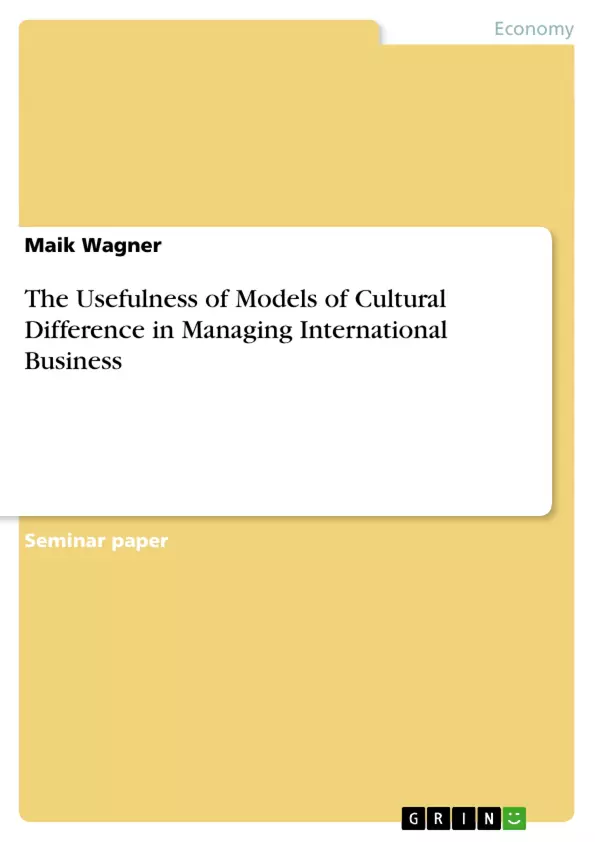More and more business is being done in an international context and more
corporations are establishing themselves globally. The question arises, then, regarding whether managerial processes developed for one specific location can be transferred to another and whether they should be changed or remain unchanged during transition. (Hunter 1999)
A series of cross-cultural research has been undertaken during the last few decades suggesting that certain management styles or business techniques may be
incompatible because of cultural differences. The following essay discusses the
usefulness of such models in managing international business. It focuses on the main 'gurus' which have developed the principal models of cross-cultural research including Geert Hofstede as well as Fons Trompenaars. At the end the essay Richard D. Lewis, widely acclaimed author of 'When cultures collide' and his views on national cultures will be discussed.
Inhaltsverzeichnis (Table of Contents)
- 1. Introduction
- 2. Geert Hofstede
- Power Distance
- Uncertainty Avoidance
- Individualism vs. Collectivism
- Masculinity vs. Feminity
- Orientation
- 3. Fons Trompenaar's research
- Universalism vs. particularism
- Individualism vs. collectivism
- Neutral vs. affective relationships
- Specific vs. diffuse relationships
- Achievement vs. ascription
- 4. Theoretical models and problems with their practical application
Zielsetzung und Themenschwerpunkte (Objectives and Key Themes)
This essay examines the usefulness of cultural models in managing international business. It analyzes prominent models developed by researchers like Geert Hofstede and Fons Trompenaars, evaluating their strengths and limitations in practical application.
- The applicability of existing cultural models to international business management.
- A critical evaluation of Hofstede's cultural dimensions.
- Comparison and contrast of Hofstede's and Trompenaars' models.
- Limitations of applying universal cultural models to diverse workplaces.
- The impact of cultural differences on various business departments.
Zusammenfassung der Kapitel (Chapter Summaries)
Chapter 1: Introduction introduces the increasing importance of managing international business and the challenges posed by cultural differences. It highlights the need for understanding cultural models in this context.
Chapter 2: Geert Hofstede delves into Hofstede's influential model, outlining his four key dimensions of culture and later addition of a fifth dimension. The chapter critically assesses the methodology, limitations, and potential misinterpretations of Hofstede's work, including the homogeneity of his sample and the temporal limitations of his research.
Chapter 3: Fons Trompenaars' research presents Trompenaars' model and its five dimensions, comparing and contrasting it with Hofstede's model. It highlights discrepancies between the two models and discusses the difficulties in converting and comparing scales across different research frameworks. It further explores the limitations of relying solely on such models for managerial decision-making.
Chapter 4: Theoretical models and problems with their practical application discusses the practical limitations and potential pitfalls of relying solely on cultural models for managerial decisions. It argues for a more nuanced approach that considers individual factors alongside cultural contexts, particularly at higher hierarchical levels within companies.
Schlüsselwörter (Keywords)
Cross-cultural management, international business, cultural models, Geert Hofstede, Fons Trompenaars, cultural dimensions, individualism vs. collectivism, power distance, uncertainty avoidance, practical application, limitations of models, managerial decision-making.
- Arbeit zitieren
- Maik Wagner (Autor:in), 2000, The Usefulness of Models of Cultural Difference in Managing International Business, München, GRIN Verlag, https://www.hausarbeiten.de/document/182233


